While Tallinn was under communist rule, it was illegal to speak, write, or sing in the Estonian language. In 1991, the people of Estonia had a bloodless Singing Revolution. Approximately 300,000 Estonians gathered in an arena and sang patriotic songs in their own language. They did this in the presence of Russian tanks, not knowing if the tanks would be used against them or not. They were not. In 1994, when the Soviet Union collapsed, Estonia became a free country again.
Tallinn has an old (high) town within the city wall and a–relatively speaking–new (low) town outside the city wall and downhill from high town.
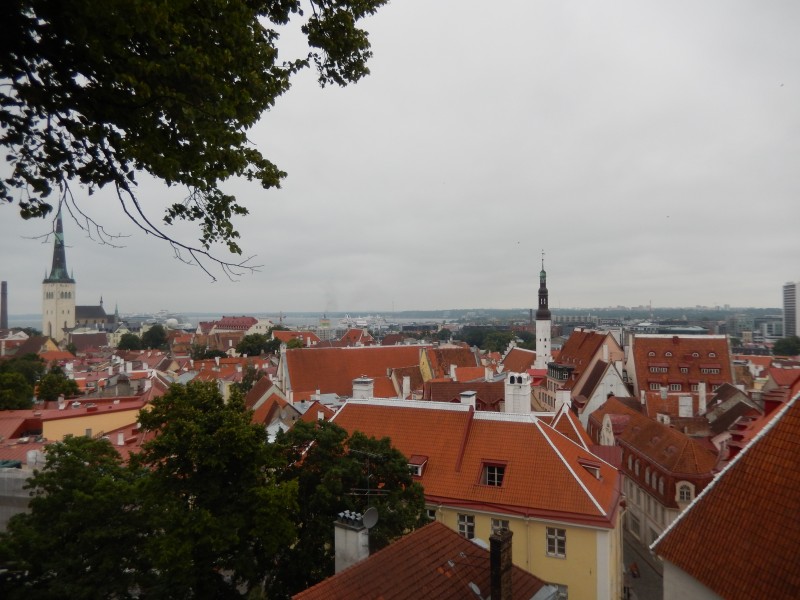
A view of low town from high town in Tallinn.
There is a pharmacy in the new town that has been in business since Medieval times (I mentioned it’s a relatively new town), making it the oldest operating pharmacy in Europe. It’s not far from a Medieval café where we were invited inside and were given samples of delicious honey-roasted almonds prepared in the Medieval manner. Yes, the remarkable thing about this café is that it operates as it has since its Medieval days: without electricity, running water, central heating, or any of the other amenities of the modern age.
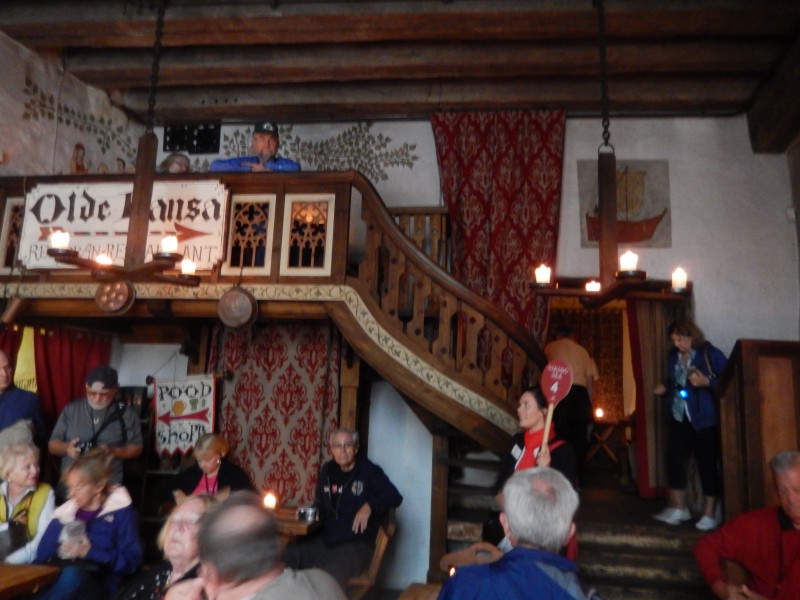
The candles in the lamps are real, not electric, and provide the only lighting in the café.
On a sidewalk in Tallinn, we saw a girl playing a Medieval instrument. Our guide didn’t know what it was called. It has three rows of stops on the lower side of the neck like an organ, as well as strings like a violin, and it’s held in a guitar-like position.
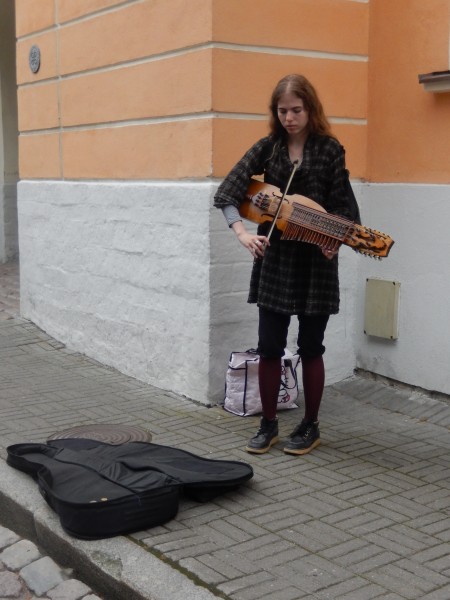
What kind of instrument is she playing?
We saw a typical-sized Medieval home on our city walk. It is the smallest building in the city, and it’s hard to imagine that it housed a family. It looks more like a playhouse for the kids.
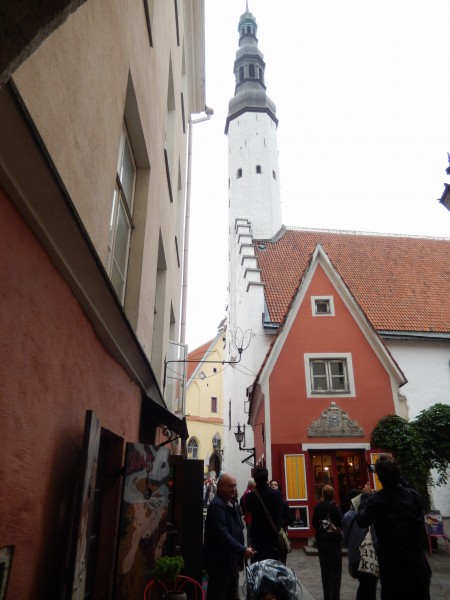
There’s not much space for living in this house by today’s standards, but it seems to work well as a small shop.

Of course Tallinn has the requisite elaborate cathedral in its city center, and of course it was beautiful inside.Although Tallinn has Medieval roots, it also has a modern side.
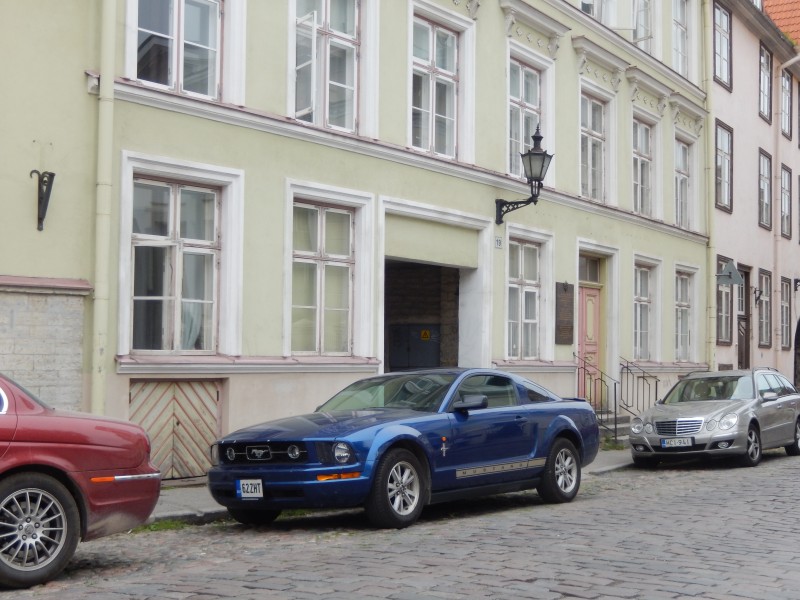
We thought of Dean when we saw this.